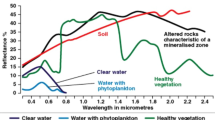Abstract
With the development of the Industrial Internet of Things (IIoT) and the proposal of smart water conservancy, the integration of the Internet of Things (IoT), edge computing, and computer vision for hydrological information monitoring has become a trend in water conservancy. Difficult to provide comprehensive hydrological data from hydrological observation stations, hydrological forecasting in uninformative basins has become one of the research hotspots. water extraction can provide support for many hydrological monitoring. However, The water is difficult to extract when the water in the near-water image has reflection and water surface ripples. We propose a multi-condition water extraction method based on superpixel segmentation under cloud-edge integration architecture. Firstly, based on the color characteristics of the water and the surrounding vegetation, we propose a reflection processing mechanism. Secondly, we propose a mechanism based on superpixel segmentation for the effect of reflection on water extraction. Then, we propose a contour correction mechanism. Finally, the flood-filling algorithm is used to extract the water. We compare the traditional image segmentation algorithm with our proposed segmentation method. The results show that the proposed method outperforms other algorithms in all evaluation metrics.
Access this chapter
Tax calculation will be finalised at checkout
Purchases are for personal use only
Similar content being viewed by others
References
Guan, H.: Hydrology. Hydrology. 2nd edn (2015)
Jin, Q.: Research and application of short-term hydrologic forecasting methods in areas without data. Ph.D. dissertation, Huazhong University of Science and Technology (2019)
Liang, J., Liu, D.: A local thresholding approach to flood water delineation using sentinel-1 SAR imagery. ISPRS J. Photogramm. Remote. Sens. 159, 53–62 (2020)
Gasnier, N., Denis, L., Fjørtoft, R., Liege, F., Tupin, F.: Narrow river extraction from SAR images using exogenous information. IEEE J. Sel. Top. Appl. Earth Observ. Remote Sens. 14, 5720–5734 (2021)
Zhang, Z., Lu, M., Ji, S., Yu, H., Nie, C.: Rich CNN features for water-body segmentation from very high resolution aerial and satellite imagery. Remote Sens. 13(10), 1912 (2021)
Hu, K., Li, M., Xia, M., Lin, H.: Multi-scale feature aggregation network for water area segmentation. Remote Sens. 14(1), 206 (2022)
Rother, C., Kolmogorov, V., Blake, A.: “grabcut’’ interactive foreground extraction using iterated graph cuts. ACM Trans. Graph. (TOG) 23(3), 309–314 (2004)
Xiao, T., Chen, C., Dong, M., Ota, K., Liu, L., Dustdar, S.: Multi-agent reinforcement learning-based trading decision-making in platooning-assisted vehicular networks. IEEE/ACM Trans. Network. (2023)
Xiao, T., Chen, C., Pei, Q., Jiang, Z., Xu, S.: SFO: an adaptive task scheduling based on incentive fleet formation and metrizable resource orchestration for autonomous vehicle platooning. IEEE Trans. Mob. Comput. 01, 1–18 (2023)
Li, H., Chen, C., Shan, H., Li, P., Chang, Y. C., Song, H.: Deep deterministic policy gradient-based algorithm for computation offloading in IOV. IEEE Trans. Intell. Transp. Syst. (2023)
Chen, C., Wang, C., Li, C., Xiao, M., Pei, Q.: A V2V emergent message dissemination scheme for 6g-oriented vehicular networks. Chin. J. Electron. 32(6), 1179–1191 (2023)
Zhou, S., Kan, P., Silbernagel, J., Jin, J.: Application of image segmentation in surface water extraction of freshwater lakes using radar data. ISPRS Int. J. Geo Inf. 9(7), 424 (2020)
Acknowledgements
This work was supported by the 2023 science and technology project ‘Research and application of multi communication system fusion networking technology for typical scenarios in power grids’ 2023JBGS-11 of State Grid Jilin Electric Power Company.
Author information
Authors and Affiliations
Corresponding author
Editor information
Editors and Affiliations
Rights and permissions
Copyright information
© 2025 The Author(s), under exclusive license to Springer Nature Switzerland AG
About this paper
Cite this paper
Zhang, Q. et al. (2025). A Cloud-Edge Integrated Water Extraction Using Superpixel Segmentation. In: Cai, Z., Takabi, D., Guo, S., Zou, Y. (eds) Wireless Artificial Intelligent Computing Systems and Applications. WASA 2024. Lecture Notes in Computer Science, vol 14998. Springer, Cham. https://doi.org/10.1007/978-3-031-71467-2_39
Download citation
DOI: https://doi.org/10.1007/978-3-031-71467-2_39
Published:
Publisher Name: Springer, Cham
Print ISBN: 978-3-031-71466-5
Online ISBN: 978-3-031-71467-2
eBook Packages: Computer ScienceComputer Science (R0)




